Programs
January 19, 2025
Course Visits: 2,973
12 Hours
Competences to be developed:
1 (a) Describe the principles of various manufacturing processes, manufacturing technology,
material removal and optimization of cutting processes
(b) Understand the capabilities of general Computer Aided Designing Systems and CAD
Systems for designing mechanical parts and elements in 2D and 3D dimensions
2 Use effectively CAD / CAM systems in order to produce the final NC code for the
manufacturing of various mechanical parts and carry out exchange of data between CAD
and CAM systems
3 Compare the
- operation and programming of CNC machine tool using manual programming,
- operation and programming of CNC machine tool using CAM systems.
4 Evaluate through computer-assisted simulation, the differences between file types of
several CAM systems.
5 Create,
- the G-code program (with a standard computer post processor) of a work-piece on a
standard numerically controlled machine tool with CNC controls.
- basic and advanced CNC programs from imported CAD data using several CAM
systems.
Estimated student’s work time distribution in hours:
Contact hours Student’s private time
Lecture 34 Private Study 34
Mid-Term Test 2 Test Preparation 10
Class seminar and
discussion on writing a
mini project
3 Mini-Project preparation 13
Lab Work 11 Lab Report 22
Final Exam 3 Final Exam Preparation 18
Total: 53 Total: 97
Learning outcomes
Students should be able to:
Introduction to CAD/CAM Systems:
Describe the various manufacturing processes for material removal and understand the
appropriate technology for each of the cutting processes.
Understand the role of CAD/CAM in modern design and manufacturing
A general Computer Aided Designing System:
Describe the principles of Computer Aided Designing systems and the concepts of Geometric
modeling, solid modeling, and feature-based design modeling.
Create and design mechanical parts and elements in 2D and 3D dimension using state of the art
CAD System.
A general Computer Aided Manufacturing System:
Distinguish the different CAD/CAM neutral files.
Understand the import and export procedure of CAD/CAM electronic neutral files (IGES, STEM,
DXF,.).
Describe the principles of CAM systems
Use Post-Processor to implement typical examples.
Operation and programming of a CNC machine tool:
Compare and distinguish the difference between the operation and programming of a CNC
machine tool using manual programming and the operation and programming of CNC machine
tool using CAM systems.
Apply both practices (manually and CAM) to develop the G-code program.
Machining of mechanical parts:
Use state of the art CAD/CAM systems to develop CNC part programs for a series of mechanical
parts.
Implement the communication procedure for transmitting the CNC part program from an external
computer to the control of the CNC machine tool.
Operate a modern industrial CNC machine tool for actual machining of simple and complex
mechanical parts.
Lab Work:
Create manually G-code CNC programs, simulate the tool-path.
Create the drawing of a mechanical part using state of the art CAD/CAM system.
Generate the G-code using the CAM system and the embedded post-processor.
Operate a CNC milling machine. Load a G-code program and execute actual machining
Operate a CNC turning machine. Load a G-code program and execute actual machining
Course Content (Syllabus):
Introduction to various manufacturing processes, Manufacturing technology,
Material removal, Optimization of cutting processes.
Principles of Computer Aided Designing systems, CAD systems for designing
mechanical parts, Creation and designing of mechanical part and elements in 2D
and 3D dimension, Construction of mechanical parts in 3D dimension by means of
CAD system.
Introduction to different CAD/CAM neutral files, Importing and exporting CAD/CAM
electronic neutral files (IGES, STEM, DXF, ….).
Principles of CAM systems, Post-Processor operation and typical examples.
Production processes using CAD/CAM systems and CNC machine tools, NC Code
in the material removal (milling, turning, wiring).
Optimization of manufacturing processes using flexible manufacturing systems,
Graphical modeling of milling and turning.
Operation and programming of CNC machine tool using manual programming, CNC
milling programming, CNC turning programming.
Operation and programming of CNC machine tool using CAM systems.
Laboratory work: A series of machining applications on a 5-axis CNC machining
center and a CNC turning machine.
Teaching Methodology:
Lectures for learning the methodology of manufacturing based on CAD/CAM Systems.
Computer-assisted simulation examples of representative mechanical parts.
Laboratory experiments: Actual machining on CNC machines. Carried out in small groups.
Tutorials, where the students ask further questions on the lectures for better comprehension
Frequent reviews and discussions
Assessment Weights Total
Mid-Term Test One 10% 10%
Coursework Lab-reports 15%
Mini-project 15%
Final Exam 60%


